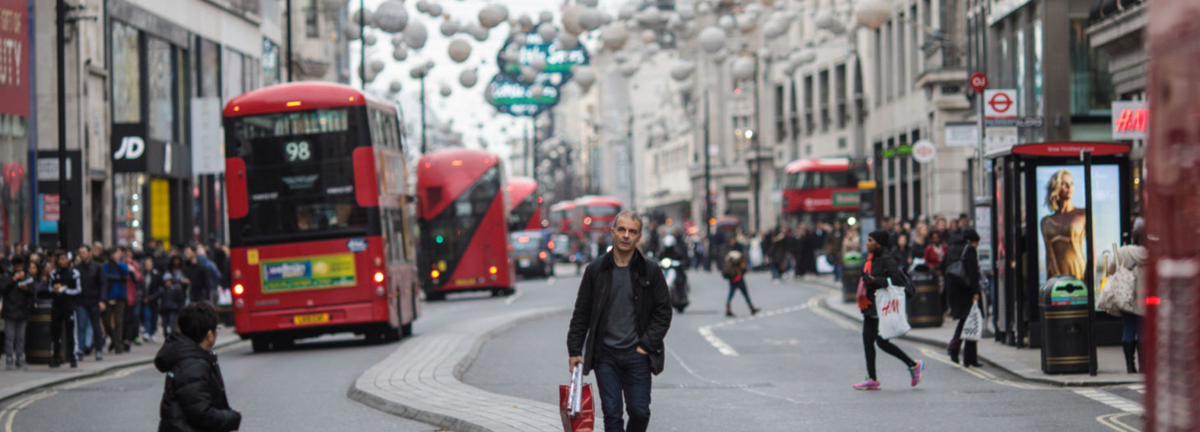A traffic free Oxford Street, why now?

With the announcement by Sadiq Khan of a project to remove traffic from Oxford Street, the response from the single mode transport groups and the resident societies is the inevitable cry of "what about us?"
Change is always a generator of anxiety, and this project, like all projects that make changes to established patterns of life, will have to move through the stages of:
- Reactive opposition
- Informed concern
- Grudging acceptance
- What’s taking so long?
- What was the fuss about?
Do Londoners not remember Trafalgar Square?
The rough and tumble debate played out to the delight of the press has so far not addressed a key question: Why now?
It cannot have escaped anyone’s attention over the last 30 years, (my time of being domiciled in ‘the smoke’, as my old man called it), that shopping on Oxford Street had its grittiness on street, a world away from the glories of the interiors of the ‘temples of mammon’ (as my old mum called Selfridges and her much-missed C&A). In that time and long before, cities all over the UK and the world have pedestrianised their main shopping street, so indeed why now?
It’s clear that there are local economic and environmental drivers, but these have always been there. Oxford Street is not more successful/unsuccessful, busier or more polluted than in the past. It seems to me that behind this project lies a driver that is also driving similar schemes, like the one in the City of London to remove the traffic from Bank. This driver is that London is growing in population and density, which is centralising and tending towards more urban, rather than suburban ways of developing and organising itself and therefore adapting to the patterns of the lives of its inhabitants, as all successful cities have always done.
For the first half of the 20th century, the population of London was greater than in the second half, reaching its peak in 1939 at 8.16 million, with most of its inhabitants living in central London. In the second half of the century, this was reversed, with a declining population and a planned decanting of inner London to the suburbs and beyond. But as London is set to match its pre-WW2 population peak and distribution, with an ever-increasing re-population in the centre, we can see that the streets and spaces and the patterns of life of this population are not compatible with the car based suburban thinking from the last half of the 20th century, which has delivered the current dysfunctional allocation of space in UK city centres.
For a look at how this long-term change will play out and how we design for a higher density future, we can not only look back at how a 1930’s low car economy London was managed and space allocated, but also we can look to other global cities. For make no mistake, London is the only global city in Europe. Paris has a population in the same category as Greater Manchester. Both are fine big towns, but not global cities, unlike London, New York or Shanghai, and these other global cities are making significant changes to the way the space between buildings is having to work harder and be shared more equitably in the 21st century.
More managed access by space allocation, as well as through time banding and off-site consolidation will be needed as part of this strategy, as we look to our streets to reflect in this space allocation more of the reasons why London is a great place to be and why it is regarded as a world cultural capital. The clues to this are in London’s past, with streets as busy as they are now with people, but planned around the tram, trolley bus and the Routemaster and not the car and van.
Subscribe to our newsletter
Want to keep up with the latest from the Design Council?
